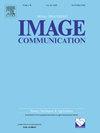Vocal cord anomaly detection based on Local Fine-Grained Contour Features
IF 3.4
3区 工程技术
Q2 ENGINEERING, ELECTRICAL & ELECTRONIC
引用次数: 0
Abstract
Laryngoscopy is a popular examination for vocal cord disease diagnosis. The conventional screening of laryngoscopic images is labor-intensive and depends heavily on the experience of the medical specialists. Automatic detection of vocal cord diseases from laryngoscopic images is highly sought to assist regular image reading. In laryngoscopic images, the symptoms of vocal cord diseases are concentrated in the inner vocal cord contour, which is often characterized as vegetation and small protuberances. The existing classification methods pay little, if any, attention to the role of vocal cord contour in the diagnosis of vocal cord diseases and fail to effectively capture the fine-grained features. In this paper, we propose a novel Local Fine-grained Contour Feature extraction method for vocal cord anomaly detection. Our proposed method consists of four stages: image segmentation to obtain the overall vocal cord contour, inner vocal cord contour isolation to obtain the inner contour curve by comparing the changes of adjacent pixel values, extraction of the latent feature in the inner vocal cord contour by taking the tangent inclination angle of each point on the contour as the latent feature, and the classification module. Our experimental results demonstrate that the proposed method improves the detection performance of vocal cord anomaly and achieves an accuracy of 97.21%.
基于局部精细轮廓特征的声带异常检测
喉镜检查是诊断声带疾病的常用检查方法。传统的喉镜图像筛查工作耗费大量人力物力,而且在很大程度上依赖于医学专家的经验。从喉镜图像中自动检测声带疾病以协助常规图像读取的做法备受青睐。在喉镜图像中,声带疾病的症状主要集中在声带内部轮廓,通常表现为植被和小突起。现有的分类方法很少关注声带轮廓在声带疾病诊断中的作用,也无法有效捕捉其细粒度特征。本文提出了一种用于声带异常检测的新型局部细粒度轮廓特征提取方法。我们提出的方法包括四个阶段:图像分割,得到声带整体轮廓;声带内轮廓隔离,通过比较相邻像素值的变化得到声带内轮廓曲线;提取声带内轮廓的潜特征,以轮廓上各点的正切倾角作为潜特征;以及分类模块。实验结果表明,所提出的方法提高了声带异常的检测性能,准确率达到 97.21%。
本文章由计算机程序翻译,如有差异,请以英文原文为准。
求助全文
约1分钟内获得全文
求助全文
来源期刊

Signal Processing-Image Communication
工程技术-工程:电子与电气
CiteScore
8.40
自引率
2.90%
发文量
138
审稿时长
5.2 months
期刊介绍:
Signal Processing: Image Communication is an international journal for the development of the theory and practice of image communication. Its primary objectives are the following:
To present a forum for the advancement of theory and practice of image communication.
To stimulate cross-fertilization between areas similar in nature which have traditionally been separated, for example, various aspects of visual communications and information systems.
To contribute to a rapid information exchange between the industrial and academic environments.
The editorial policy and the technical content of the journal are the responsibility of the Editor-in-Chief, the Area Editors and the Advisory Editors. The Journal is self-supporting from subscription income and contains a minimum amount of advertisements. Advertisements are subject to the prior approval of the Editor-in-Chief. The journal welcomes contributions from every country in the world.
Signal Processing: Image Communication publishes articles relating to aspects of the design, implementation and use of image communication systems. The journal features original research work, tutorial and review articles, and accounts of practical developments.
Subjects of interest include image/video coding, 3D video representations and compression, 3D graphics and animation compression, HDTV and 3DTV systems, video adaptation, video over IP, peer-to-peer video networking, interactive visual communication, multi-user video conferencing, wireless video broadcasting and communication, visual surveillance, 2D and 3D image/video quality measures, pre/post processing, video restoration and super-resolution, multi-camera video analysis, motion analysis, content-based image/video indexing and retrieval, face and gesture processing, video synthesis, 2D and 3D image/video acquisition and display technologies, architectures for image/video processing and communication.
 求助内容:
求助内容: 应助结果提醒方式:
应助结果提醒方式:


